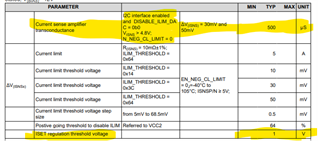-
Moreover, if the CDC pin is functioning as a current monitoring device,should R(CDC) be determined using the equation V(CDC) = [V(ISNSP) - V(ISNSN)] × gm(CDC) × R(CDC) ?
-
When employing the CDC pin for cable drop compensation, what is the suitable resistor value to be connected?


